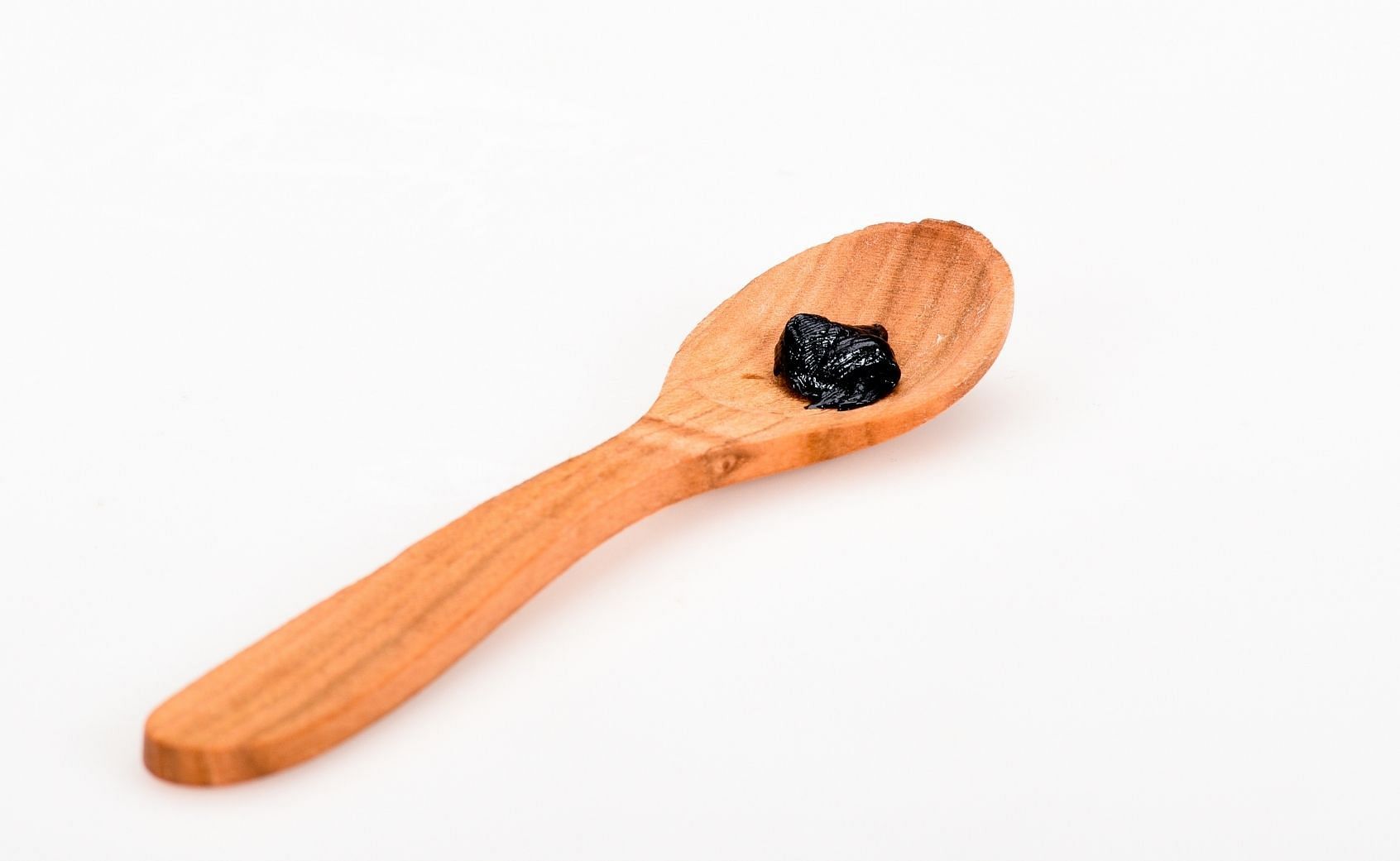Shilajit: Benefits, Risks, Dosage & How to Choose a Safe Supplement
Thinking of trying shilajit? Learn what it is, its science-backed benefits (energy, fertility, cognition), risks like heavy metal contamination, safe dosage, and how to pick the best third-party tested Himalayan shilajit supplement for purity and results.

Everything you need to know about shilajit: science-backed benefits (cognition, fertility, collagen), safety concerns (heavy metals), dosing guidance, drug interactions, and how to pick a safe, third-party tested shilajit (including lab-tested Man Matters options).
What shilajit is and why it matters
Shilajit is a dark, sticky mineral-rich resin formed over centuries in mountain rocks (most famously the Himalayas). Traditional Ayurvedic medicine calls it a rasayana — a rejuvenator — because it’s rich in fulvic acid, humic substances and 80+ trace minerals. In modern wellness, shilajit is often discussed in research for its mineral content and fulvic acid — with scientists still exploring its role in areas like bone health, metabolism, and cognition. But the evidence is mixed: some small clinical trials and lab studies are promising, while safety and standardization remain real concerns.
Quick snapshot (for skimmers)
- Areas currently being studied (preliminary only):
pre-clinical and small-scale studies have looked at cognition markers (fulvic acid), hormone levels, collagen synthesis signals, lipid profiles, and altitude response — but findings are still early, not conclusive - Main safety concerns:
contamination with heavy metals (lead, mercury, thallium, arsenic), microbial contaminants, hormone changes, drug interactions (notably antidiabetics) - Typical study doses:
widely variable — 100 mg twice daily in fertility trials up to 2 g/day in older lipid studies; many modern trials use 250–1,000 mg/day. Always consult a clinician
What the science actually supports (and what it doesn’t)
1. Cognitive health & Alzheimer’s markers (promising but preliminary)
Laboratory and small human studies suggest fulvic acid — a major component of shilajit — has been studied for potential to block tau aggregation in lab models — but this is mechanistic, not clinical proof. These findings are mechanistically interesting but not definitive clinical proof; larger, well-controlled trials are needed
2. Collagen synthesis, bone & muscle support
A randomized 8-week trial reported that 500–1,000 mg/day of shilajit some research has reported changes in serum collagen markers, but this has not been tied to real-world outcomes (like bone or skin health)
3. Lipids and metabolic effects
Older small studies older studies looked at lipid levels, but these were small and inconsistent — not strong enough to guide supplementation decisions with higher shilajit doses (e.g., 2 g/day for 45 days). Animal studies also indicate potential metabolic benefits, but modern large RCTs are lacking.
4. Lab (in-vitro) antiviral/anti-inflammatory signals
Test-tube work shows antiviral activity and immunomodulatory effects, but these do not reliably translate to human benefit without clinical trials.
Safety, contaminants & drug interactions — what to watch for
- Contamination risk:
Raw/unprocessed shilajit can contain heavy metals (lead, mercury, arsenic, cadmium and—recently highlighted—thallium) and microbes. A 2025 analysis specifically quantified thallium in some shilajit samples and supplements, underscoring the need for rigorous testing. Because supplements aren’t regulated like drugs, product safety depends on brand purification and third-party testing. - Hormone effects:
Some studies show shilajit may raise testosterone levels — useful for some men but potentially problematic for others (e.g., hormone-sensitive conditions). - Blood sugar:
Shilajit can lower blood glucose; combining shilajit with antidiabetic drugs may cause hypoglycaemia. Monitor levels closely and consult your doctor if you have diabetes or take glucose-lowering medications. - Who should avoid it:
Pregnant or breastfeeding people, children, people with hemochromatosis (excess iron), certain autoimmune conditions or uncontrolled chronic illness — unless a clinician supervises use.
Practical dosing — what trials have used (not medical advice)
- Fertility trial: 100 mg twice daily for 90 days.
- Collagen trial: 500–1,000 mg/day for 8 weeks.
- Older lipid study: 2 g/day for 45 days.
Because formulations vary (resin vs. powder vs. gummies vs. capsules) and purity matters, there is no universal “safe” dose. Start low only after medical clearance and use a product with certificate-of-analysis (COA) from an independent lab.
How to pick a safe, high-quality shilajit supplement
- Third-party lab testing / COA: Look for a COA that tests for heavy metals, microbial contaminants and potency. Avoid products without lab results.
- Source & processing transparency: Brands that describe origin (Himalayan resin), purification methods and ingredient lists are preferable.
- Dose clarity: Product label should state the shilajit content per serving and whether additional ingredients are included (e.g., ashwagandha).
- Reputable brands & reviews: Choose established brands with good reviews and clinical or lab backing. For example, some mainstream wellness brands (including Man Matters) offers Himalayan Shilajit options — every batch third-party lab tested for purity, heavy metals, and fulvic acid percentage. Always check the COA before purchase.
- Avoid raw/untested powders from unverified sellers. Social-media trends often push unverified “black goo” products; that’s where contamination risk is highest.
Frequently Asked Questions
Q: Is shilajit safe?
A: It can be when it’s properly purified and third-party tested — but raw or untested shilajit can contain dangerous heavy metals and microbes. Consult a healthcare provider.
Q: Does shilajit help memory or Alzheimer’s?
A: Lab and small human studies are exploring Shilajit’s role in memory research, but there is no clinical evidence to support it as a treatment.
Q: Can shilajit increase testosterone or sperm count?
A: Some early studies observed changes in sperm health and hormone markers, but these are preliminary — not conclusive enough to treat Shilajit as a fertility solution.
Q: What dose should I take?
A: Doses used in studies range from 100 mg twice daily up to 2 g/day. Because products vary, follow label directions and your clinician’s advice.
Q: Can diabetics take shilajit?
A: Shilajit may lower blood sugar and could interact with antidiabetic medicines. If you have diabetes, consult your doctor before using it.
Quick comparison: forms of shilajit
- Gummies: Easier to take; check added sugars and actual shilajit content. (Some brands, including Man Matters, offer lab-tested shilajit gummy options — still verify the COA and ingredient list).
- Resin (raw/purified): Traditional form; potent but strong taste — choose purified with COA.
- Capsules / tablets: Convenient; check mg of pure shilajit per serving.
Takeaway — how to use this supplement wisely
Shilajit is a centuries-old Ayurvedic phytocomplex with early research interest across areas like cognition, hormones, and collagen markers — but none are yet confirmed benefits. However, evidence is not yet strong enough to call it a proven therapy for chronic disease. The real risk today is product quality: heavy metals and contaminants have been found in some supplements.
If you’re curious about trying shilajit, do three things first: (1) talk to your healthcare provider, (2) choose a product with an independent COA, and (3) start at a low dose under supervision.
Key things to check: >70% fulvic acid, Himalayan origin, no added sugar, and every batch tested for heavy metals.



